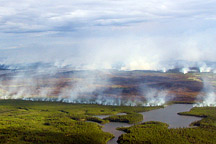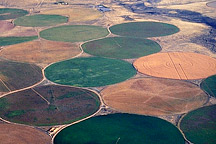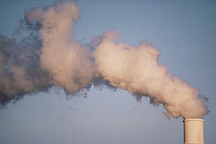Human Presence
-
 A Burning Question (DAAC Study) November 1, 1999
A Burning Question (DAAC Study) November 1, 1999Evidence suggests that atmospheric aerosols from biomass burning may offset global warming caused by greenhouse gases.
-
 Adapting to Climate Change October 13, 2000
Adapting to Climate Change October 13, 2000Teams of scientists and resource planners assess their region’s most critical vulnerabilities in the United States National Assessment on the Potential Consequences of Climate Variability and Change. The report covers agricultural productivity, coastal areas, water resources, forests, and human health.
-
 Ask-A-Scientist July 25, 2006
Ask-A-Scientist July 25, 2006Questions from visitors to the Earth Observatory and answers from scientists.
-
 Bright Lights, Big City October 23, 2000
Bright Lights, Big City October 23, 2000For the past six years, researchers have been looking for ways to measure the effects of urbanization on biological productivity in countries around the world. To assist them with their research, they have created a method of mapping urbanization on a countrywide scale by using satellite images of the light cities generate at night.
-
 Changing Our Weather One Smokestack at a Time August 7, 2000
Changing Our Weather One Smokestack at a Time August 7, 2000Daniel Rosenfeld and a team of scientists from the Hebrew University of Israel recently discovered that aerosol particles from factories and power plants increase the number of droplets in clouds they pollute. In doing so, the pollutants create brighter clouds that retain their water and do not produce rain.